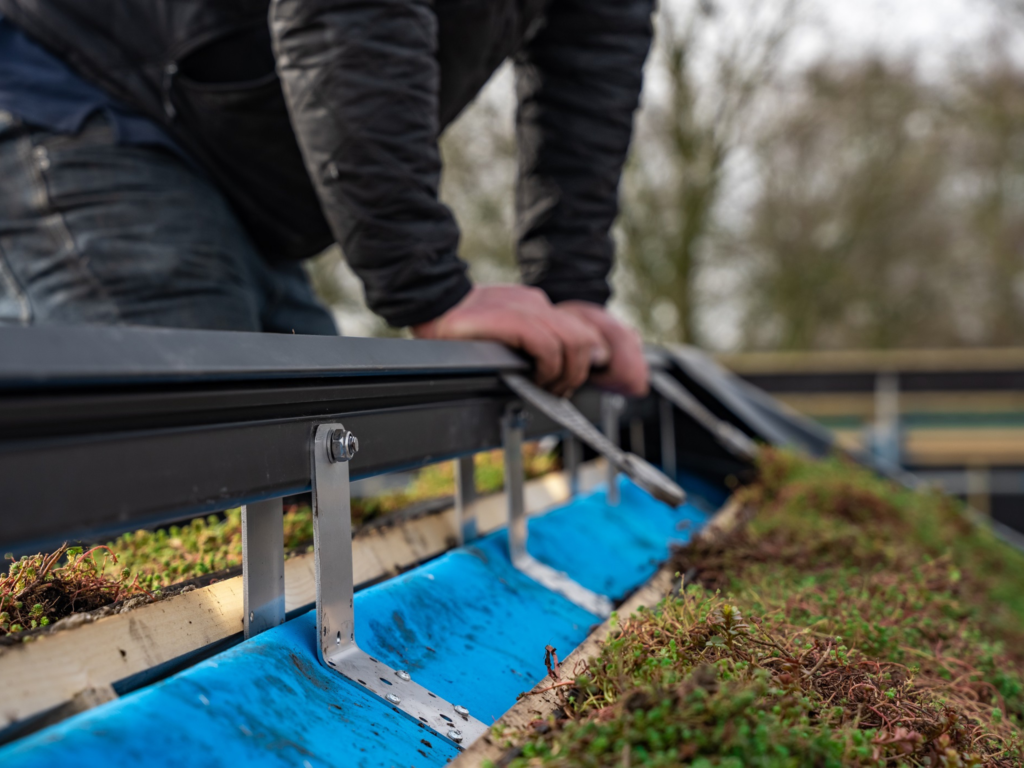The built environment stands at a critical juncture. As we grapple with the pressing challenges of climate change and resource depletion, the architecture and construction industries must evolve. The concept of “sustainable buildings” has moved beyond a niche trend and is now a fundamental necessity. However, true sustainability goes further than simply using eco-friendly materials or adding a few solar panels. It requires a holistic, long-term approach that ensures structures are resilient, adaptable, and energy-efficient for generations to come. This article explores the core principles and innovative practices that are defining the future of green architecture, delving into how we can design and construct buildings that are not only environmentally responsible but also economically viable and socially beneficial.
The Foundational Pillars of Sustainable Design
Sustainable building architecture is a multifaceted discipline built on three core pillars: environmental, economic, and social. A truly future-proof building addresses all three, creating a structure that is not only kind to the planet but also financially sound and contributes positively to the well-being of its occupants and the surrounding community.
A. Environmental Responsibility: This is the most widely recognized aspect of sustainable design. It focuses on minimizing a building’s ecological footprint throughout its entire lifecycle—from material sourcing and construction to operation and eventual demolition. Key practices include reducing energy and water consumption, using renewable resources, minimizing waste, and protecting local ecosystems.
B. Economic Viability: A sustainable building must be financially feasible. This includes not just the initial construction costs but also long-term operational expenses. Designing for energy efficiency, using durable materials, and reducing maintenance needs can lead to significant savings over a building’s lifetime, making green buildings a smart investment.
C. Social Equity and Well-being: Sustainable architecture also considers the human element. It involves creating spaces that are healthy, safe, and comfortable for occupants. This includes maximizing natural light and ventilation, using non-toxic materials, and designing buildings that foster a sense of community and connection to nature.
Biomimicry and Biophilic Design
As we look to the future, architects are increasingly turning to nature for inspiration. Biomimicry is the practice of imitating nature’s processes and forms to solve human problems, while biophilic design integrates natural elements into the built environment to create a human connection with the natural world.
A. Mimicking Nature’s Genius: Biomimicry in architecture involves studying how organisms and ecosystems have adapted over millennia to find efficient solutions. For example, some buildings use a ventilation system inspired by the self-cooling mechanism of termite mounds. This allows for passive cooling without the need for energy-intensive air conditioning.
B. The Power of Biophilic Principles: Biophilic design goes beyond a few potted plants. It incorporates natural light, water features, natural materials, and views of greenery to create a calming and restorative environment. Research shows that biophilic design can reduce stress, improve cognitive function, and enhance creativity and well-being, making it a critical component of healthy, future-proof buildings.
C. A Symbiotic Relationship: By combining these two principles, architects can create buildings that not only function like natural systems but also feel like a part of nature. This symbiotic relationship between the building and its environment is key to long-term sustainability and occupant satisfaction.
The Revolution of Smart Building Technology
The buildings of tomorrow won’t just be static structures; they will be intelligent, responsive, and deeply integrated with technology. Smart building systems use sensors, data analytics, and automation to optimize performance, enhance security, and improve occupant comfort.
A. Automated Energy Management: Smart systems can analyze a building’s energy consumption patterns and make real-time adjustments to heating, ventilation, and lighting. This can lead to massive energy savings. For instance, sensors can detect when a room is empty and automatically turn off lights and adjust the temperature.
B. Predictive Maintenance: Instead of waiting for a system to fail, intelligent buildings can predict when maintenance is needed. Sensors on HVAC systems, elevators, and other critical infrastructure can detect early signs of wear and tear, allowing for proactive repairs that prevent costly breakdowns and extend the lifespan of equipment.
C. Personalized Occupant Experience: Smart technology can be used to tailor the building environment to individual preferences. Occupants can use apps to control the lighting, temperature, and even air quality in their personal space, leading to a more comfortable and productive environment.
Modular and Prefabricated Construction
Traditional construction methods are often resource-intensive and time-consuming. The rise of modular and prefabricated construction offers a more efficient, less wasteful alternative that is perfectly aligned with sustainable building principles.
A. Reduced Waste and Increased Efficiency: With modular construction, building components are manufactured in a controlled factory environment. This allows for precise measurements and minimal material waste. The components are then transported to the construction site and assembled, which significantly reduces the construction timeline and site disruption.
B. Improved Quality Control: Manufacturing in a factory setting ensures consistent quality control, as the work is not exposed to the unpredictable weather conditions of a construction site. This leads to more durable and long-lasting buildings that require less maintenance over time.
C. Greater Design Flexibility: While often perceived as rigid, modern modular construction offers surprising design flexibility. Components can be customized to a high degree, and new modules can be added or rearranged in the future, allowing the building to adapt to changing needs.
The Importance of Net-Zero and Carbon Neutrality

The ultimate goal for many sustainable building projects is to achieve net-zero energy or even carbon neutrality. This means the building produces as much energy as it consumes or offsets its carbon emissions entirely.
A. Achieving Net-Zero Energy: A net-zero energy building is highly insulated and uses passive design strategies to minimize energy demand. It then generates the remaining energy it needs through on-site renewable sources, such as solar panels or wind turbines, to achieve a zero-net energy balance over the course of a year.
B. The Path to Carbon Neutrality: Carbon neutrality is a broader concept that accounts for all carbon emissions associated with a building, from construction to operation. It involves using low-carbon materials, minimizing energy consumption, and then offsetting any remaining emissions through carbon credits or other measures.
C. The Role of Policy and Incentives: Governments and organizations are increasingly providing incentives for net-zero and carbon-neutral buildings, making them a more attractive and economically viable option for developers and owners.
Building with a Circular Economy in Mind
The traditional “take-make-dispose” model of construction is unsustainable. The circular economy offers a new paradigm where materials are kept in use for as long as possible. In building architecture, this means designing buildings for disassembly and using recycled or reclaimed materials.
A. Designing for Disassembly: Future-proof buildings will be designed with a plan for their eventual deconstruction. This means using modular components and mechanical fasteners rather than adhesives or permanent welds, making it easy to take the building apart and reuse the materials.
B. Reusing and Repurposing Materials: The construction industry is a major source of waste. By using reclaimed wood, recycled steel, and other salvaged materials, we can reduce the demand for new resources and minimize landfill waste. This also adds character and history to the building.
C. Material Passports: In the future, buildings may come with a “material passport,” a digital record that tracks the origin and properties of all materials used. This makes it easier to identify and reuse materials at the end of the building’s life.
Conclusion
The architecture of the future is fundamentally different from the architecture of the past. It is not just about aesthetics or function but about a profound responsibility to our planet and to the generations that will follow. The shift toward sustainable, future-proof buildings is being driven by a convergence of technological innovation, a deeper understanding of human well-being, and a growing environmental consciousness. The principles outlined in this article—from integrating biomimicry and smart technology to embracing a circular economy and net-zero goals—are not isolated ideas but interconnected strategies for creating a more resilient and harmonious built environment.
By adopting these practices, we can move beyond simply minimizing our negative impact and begin to create buildings that actively contribute to the health of our communities and ecosystems. The design and construction of future-proof buildings will require a collaborative effort from architects, engineers, builders, and policymakers. It is a continuous journey of innovation and adaptation. The long-term economic benefits, coupled with the profound positive social and environmental impacts, make this not just a desirable path but an essential one. The buildings we construct today will be a testament to our commitment to a sustainable future, and by embracing these forward-thinking architectural principles, we are building a legacy of resilience, efficiency, and beauty that will stand the test of time.












